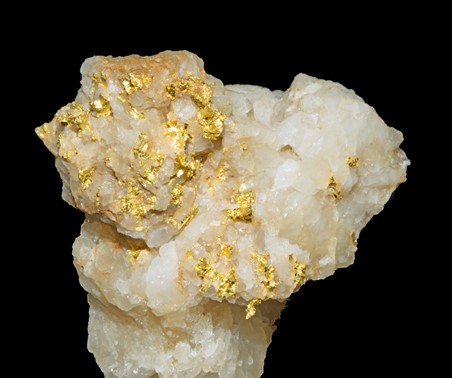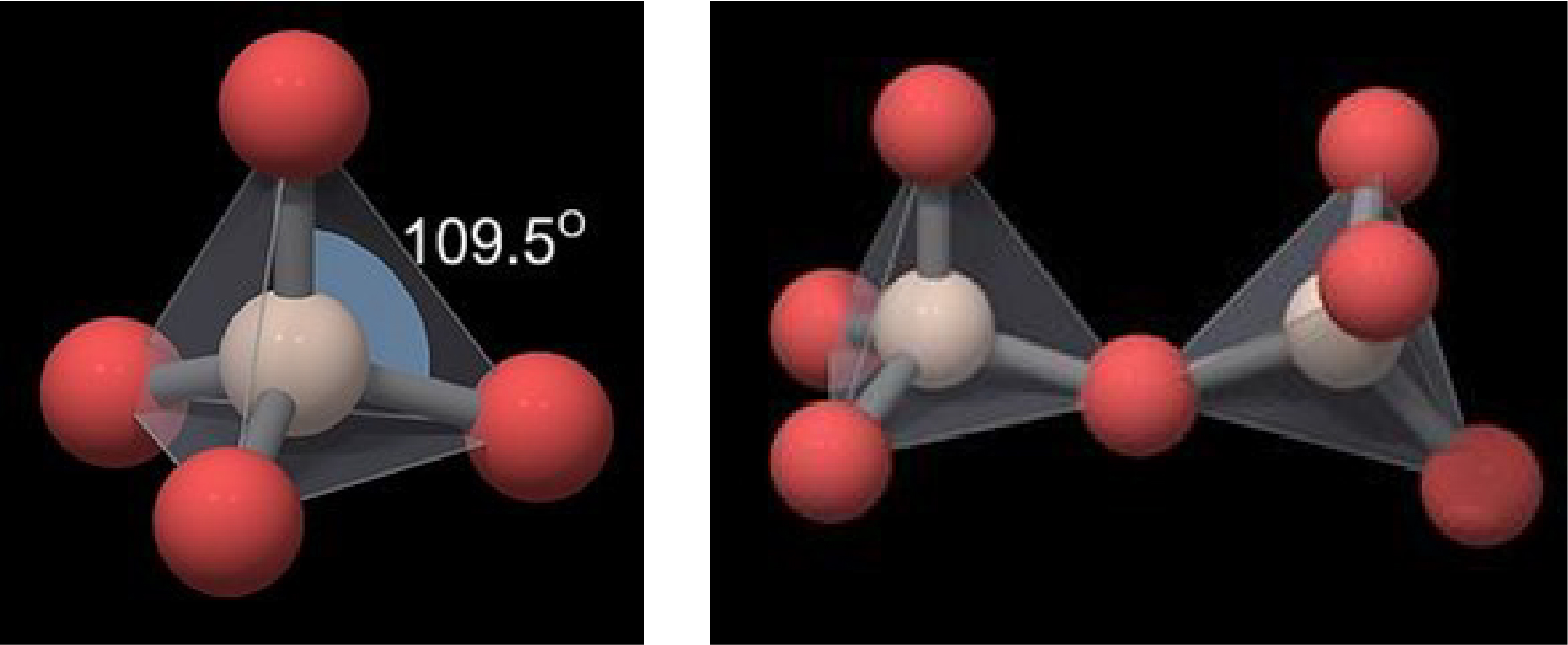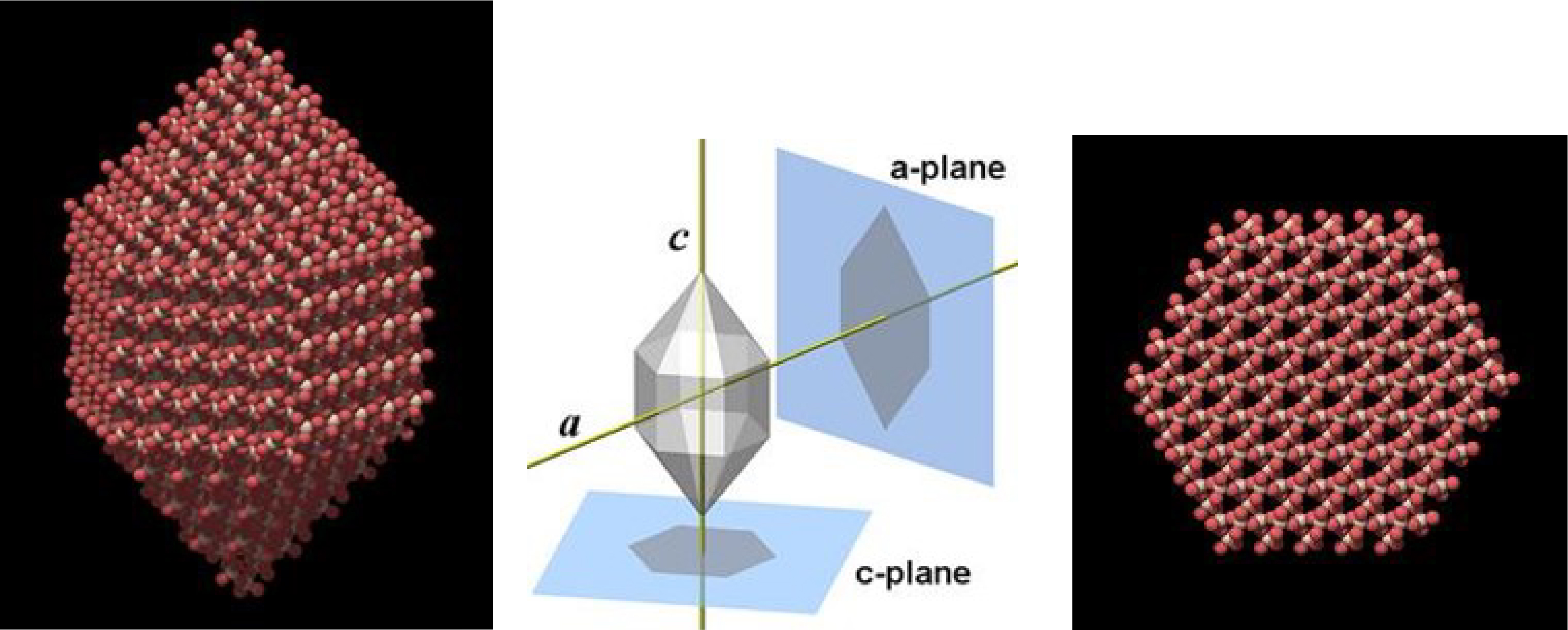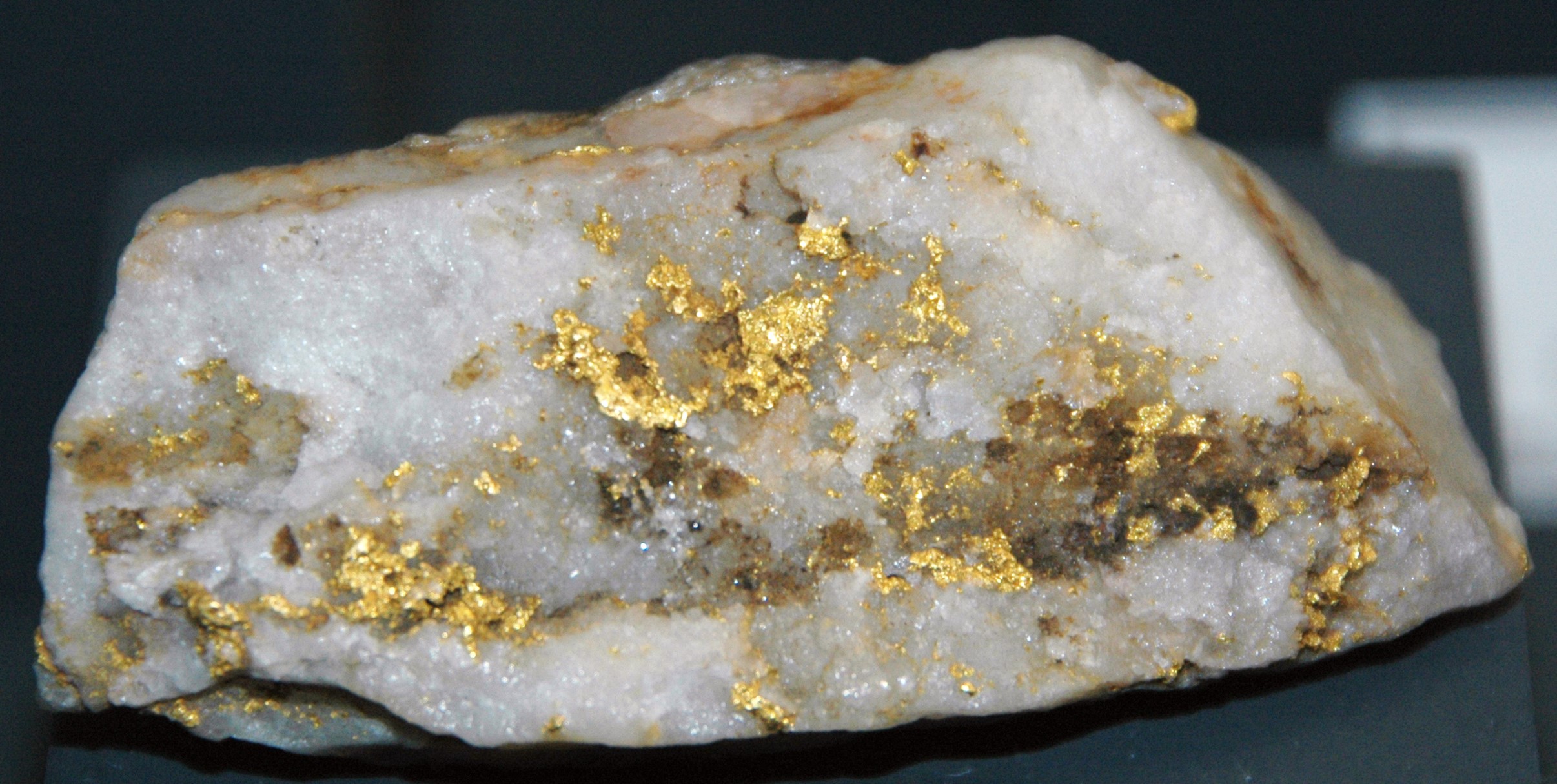
Credit: Géry PARENT, CC BY-SA 4.0, Wikimedia Commons
Background
Synopsis: The thrill of every prospector is to find that one, enormous nugget of gold and strike it rich! Geologists have understood the mechanisms for gold deposits in terms of both the chemical processes of gold deposition and the geological and physical mechanics of fluid flow. Despite this vast knowledge, scientists have remained perplexed as to why larger nuggets accumulate within some quartz veins. A group of researchers from Monash University in Australia, may have found the answer.
- Gold has been prized by humankind throughout history with the earliest artifacts found in Bulgaria, dating back to the 5th millennium B.C. The region of Nubia in ancient Egypt is believed to be the first location of gold mining, resulting in Egypt becoming incredibly wealthy as gold became the standard for currency. But what qualities of gold have made it such a valuable resource?
- Both the color and the shiny brilliance of gold make if appealing visually.
- It is durable and does not tarnish as it is highly unreactive chemically.
- Despite being durable, gold is extremely malleable, able to be hammered and shaped without breaking.
- It is extremely dense, 19.3 grams per cubic centimeter, compared to other metals which typically range from 2.7 g/cm3 for aluminum, 8.9 g/cm3 for copper, and 11.3 g/cm3 for lead.
- Gold is also a very good conductor of both heat and electricity, the later making it a vital component in ever smaller electronic devices.
- Gold is, however, a very soft metal and is often combined with other metals such as silver, zinc, and copper to form stronger alloys.

Gold has been valued for centuries and with the earliest evidence of mining from ancient Egypt. This gold foil covered lamb from Ancient Egypt can be seen at Ancient Egypt Gallery, Louvre Museum, Paris, France
Credit: Gary Todd, CC0, via Wikimedia Commons
- Quartz comprises twenty percent of Earth’s crust and makes up twelve percent of the land surface. Its lattice structure is composed of a web of tetrahedral SiO4.
- Each silicon atom is connected to four oxygen atoms. This structure then bonds with a neighboring SiO4 with each oxygen then connected to two silicon atoms.
- This pattern repeats, building a complex lattice with multiple bond angles. This larger structure is known as tectosilicate.

The SiO4 molecule, with silicon as the central atom, creates a tetrahedron shape with a bond angle of 109.5°. When each tetrahedron bonds with a neighboring tetrahedron, sharing an oxygen atom, an angle of 144° is created between the Si-O-Si structure.
Credit: Copyright © A. C. Akhavan, via The Quartz Page
The large tectosilicate lattice structure of the under ideal conditions is shown on the left. The center image shows how we can inspect this structure from various angles. The image on the right shows the structure along the c-plane.
Credit: Copyright © A. C. Akhavan, via The Quartz Page - Although it appears to be very uniform, the varying bond angles create a lattice that lacks a center of symmetry. The structure will look different, depending on the viewpoint.
- A common analogy of this phenomenon is an orange. You can view a full orange segment, or you might cut between orange sections with a knife, or perhaps cut across and observe what resembles a wheel. The size and appearance of the wheel would change depending on where the cut was made – from the top, bottom or middle.
- Similarly, a quartz lattice will also appear different and exhibit different properties when observed along various planes. A difference in the property of a material when measured along different axes is known as anisotropy.
- This anisotropy is observed in quartz. When one side of the lattice structure is compressed, the crystal becomes distorted, causing the electrons to be redistributed, resulting in an electrical potential, or voltage.
- The amount of charge produced is directly proportional to the force applied. This is one of the best examples of electrical polarization in nature and is known as piezoelectricity.
- This piezoelectric nature of quartz makes it valuable for many applications in electronics including watches, electric vehicles, telecommunications, cloud storage, consumer electronics, and medical devices.
- Gold nuggets found in quartz make up 75% of all the mined gold on Earth and the gold found in quartz typically cluster into much larger nuggets than those of other types of gold deposits.
- Hydrothermal fluids will carry gold from deep within the crust up through quartz veins, yet there are locations where larger volumes of gold tend to mineralize.
- Gold should spread evenly within these cracks but that is not the case.
- Geologists want to figure out why the larger nuggets form.
- Researchers at Monash University in Melbourne, Australia studied this mystery and made two important observations.
- First, they recognized that the largest gold deposits formed during earthquakes, known as orogenic gold deposits. These occur when mountain building results at convergent plate tectonic boundaries.
- Second, because quartz is piezoelectric, they realized that the geologic stress from an earthquake might create an electric current in the quartz.
- They then designed a laboratory experiment to test their hypothesis, attempting to mimic larger geological processes.
- Researchers submerged quartz crystals into a solution containing gold ions. They then simulated the stress of a natural earthquake by applying a frequency of 20 Hertz. The seismic waves that vibrate the ground due to earthquakes range from 0.1 – 30 Hz.
- This directionally applied frequency generated the piezoelectric charge in the quartz.
- The presence of a charge causes the gold to precipitate out of the solution by a process known as an oxidation-reduction reaction. When the current is generated by the compressed quartz, solid gold is formed. AuCl4- (solution) + 3 e- → Au(solid) + 4 Cl-(solution)
- Furthermore, because gold is such a good conductor, any gold that forms on the crystal shares the same voltage as the quartz causing additional gold particles to deposit on the surface in the same location, making for larger and larger gold nuggets.
- This process continues with each seismic event, allowing for larger and larger gold nuggets to form.
- This proposed gold – quartz deposition mechanism will continue to be evaluated to determine if it occurs in actual gold deposits in nature. The quartz crystals must exhibit the correct alignment to the geological stress for the piezoelectric effect to occur. Will the optimal lab conditions be observed in the field? As with all science, the study of this unique phenomenon will continue.

A sample of gold-quartz hydrothermal vein from the Maryland Mine at Potomac, Maryland, USA
Credit: James St. John, CC BY 2.0, via Wikimedia Commons
Episode Script
Gold has been valued by humans for at least 7,000 years. The earliest gold items were found in Bulgaria, from the 5th millennium BC. The first mines were likely in the ancient African kingdom of Nubia. Egyptians created great wealth, and great art, from gold.
Gold is valuable because it’s so unusual. It’s very dense, even denser than lead. It’s very durable, yet also very soft. It’s the most malleable metal – we can roll it into sheets thin enough to transmit light. And it’s an excellent conductor of both heat and electricity.
Gold miners noticed 2 other curious properties. Most gold is found in quartz. And it’s often found in earthquake zones.
Scientists wondered, could the two be connected? So, they set up an experiment to find out.
They immersed quartz crystals in a solution of water and gold ions. Then they subjected the tank to 20 hertz soundwaves, simulating an earthquake.
The sound pressure triggered the piezoelectric properties of quartz – when subjected to physical stress it produces an electrical current.
The electric charge drew the gold out of the water solution to clump on the quartz. That gold carried the current, because it’s such an excellent conductor, and drew more gold to clump onto it.
This may explain why the largest gold nuggets are found on quartz. And, if we could attract it to an electric current, it just might be a new way to prospect for gold.

